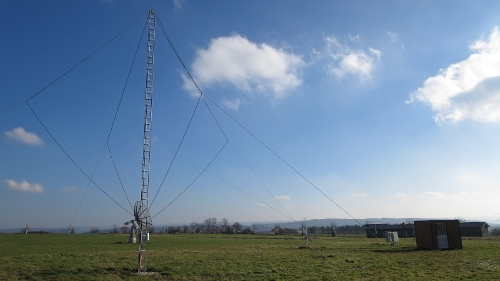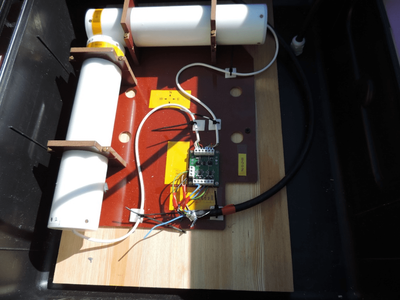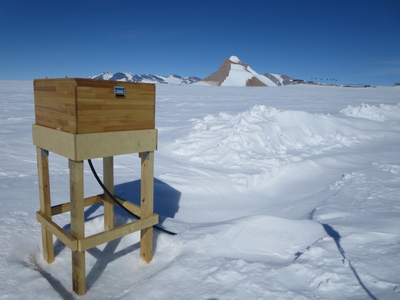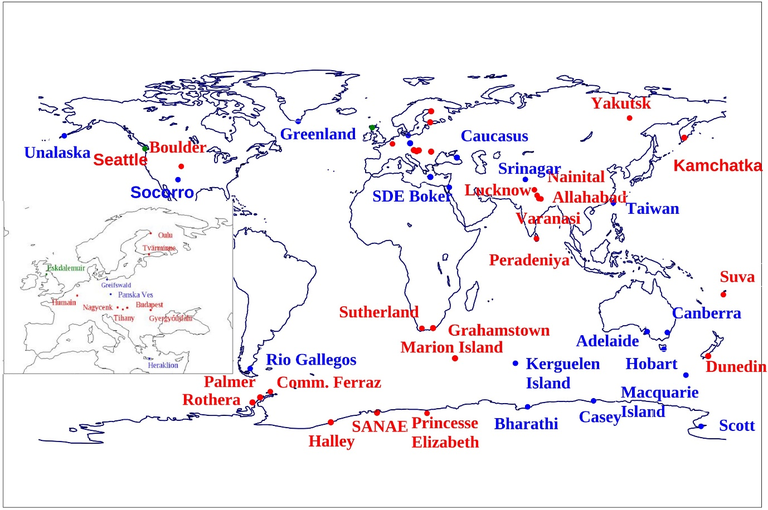VLF receivers
The Very Low Frequency (VLF) receivers detect whistler waves in the very low frequency (3-30 kHz) range. Whistlers are a particular type of electromagnetic waves that are generated by lightning discharges and that propagate from one hemisphere to another via Earth's magnetosphere. From the received whistlers, we obtain information about an inner region of the magnetosphere, the plasmasphere, and in particular about the electron densities in the equatorial plane.

Figure 1: Sketch showing the generation and propagation of whistler waves
One VLF antenna has been installed in October 2010 in Humain, Belgium (50.11° North, 5.15° East). This antenna is made of two perpendicular magnetic loops, oriented North-South and East-West, with an area of approximately 50 square meters each.

Figure 2: VLF antenna in Humain, Belgium.
A second VLF antenna has been installed in January 2016 at the Belgian Antarctic station Princess Elisabeth (71.57° South, 23.20° East). This antenna is composed of two magnetic search coils, oriented North-South and East-West, and has no mast because of the weather at such latitudes.

Figure 3: VLF magnetic search coils at the Belgian Princess Elisabeth station in Antarctica.

Figure 4: The VLF antenna at the Belgian Princess Elisabeth station in Antarctica.
These antennas are part of AWDAnet, the Automatic Whistler Detector and Analyzer system's network. This network covers low, mid and high magnetic latitudes, including multiple pairs of conjugate locations. It has been initiated by J. Lichtenberger (Hungary). Worldwide, 27 antennas are in operation and more than 20 are planned or under construction.

Figure 5: Stations of the AWDA (Automatic Whistler Detector and Analyser) measurement network. Stations in operation are in red, under construction in green, and planned in blue).
